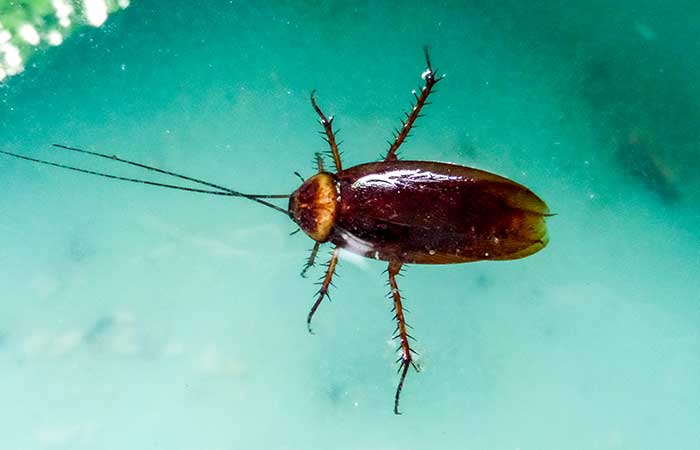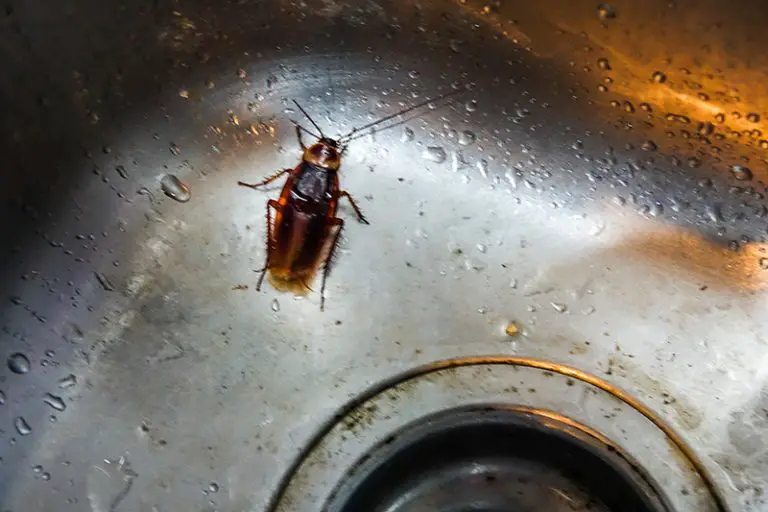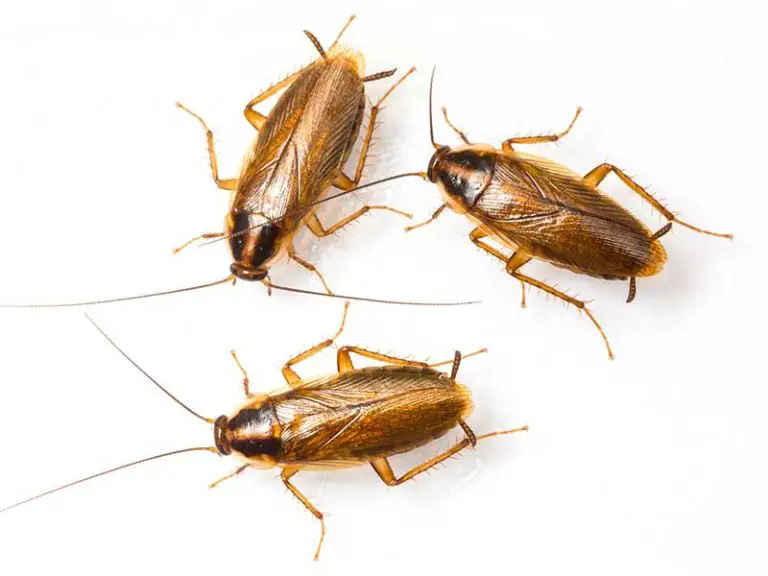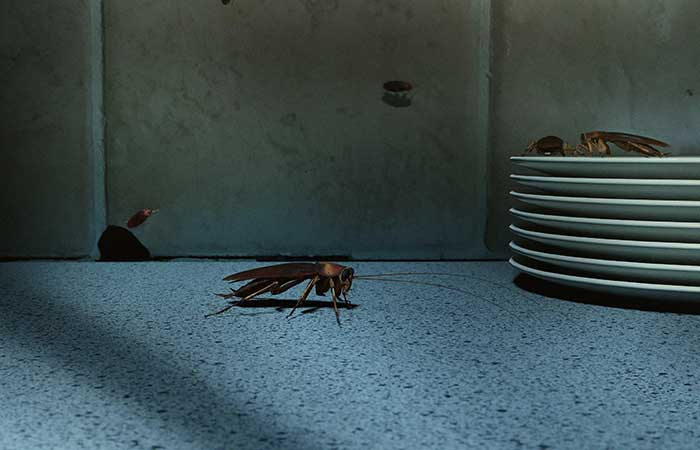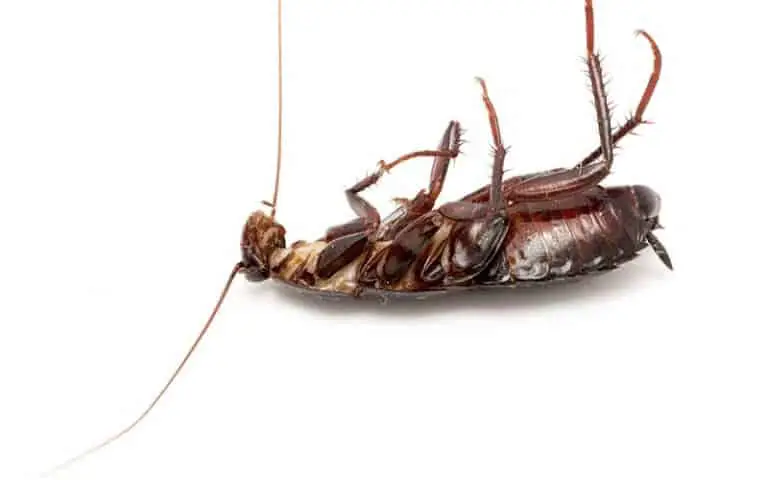Are There Cockroaches in Chocolate?
Chocolate is possibly the most popular treat that many people enjoy worldwide. But a common question that often arises is about insects being present in chocolate, in particular, cockroaches. It’s the truth no one wanted to hear. You may be eating roach particles while you eat chocolate.
Is it really true that there are cockroaches in chocolate? How did they get in there is it still safe to eat your favorite chocolate brand?
The answer is YES, cockroach traces are found in chocolate! The FDA’s guidelines state that it’s legal for chocolate to contain up to 60 insect fragments per 100g. Cockroaches and other pests are unwittingly present during the manufacturing process, and getting rif of them is not possible without extremely expensive and time-consuming quality control machinery being installed.
However, don’t be too shocked and bin your tasty snack. You won’t find roach heads, wings, or legs while you’re eating your chocolate. Only the very smallest traces are present in chocolate which are practically invisible and you won’t be able to taste them.
How Do Cockroaches Get into Chocolate?
Cockroaches parts aren’t deliberately added to chocolate as a cost-cutting measure. They’re an inevitable component of the manufacturing process, in which cockroaches and other insects are always present.
Most of the world’s cocoa comes from four West African nations: Ivory Coast, Ghana, Nigeria, and Cameroon. The plants are infested by roaches, mites, and other pests as they develop.
In many cases, cocoa farmers in these regions do not have access to sophisticated pest-removal equipment. This means that roaches from these areas may occasionally fall into the processing vessels during the transportation or cooking stage and get mixed up with the cocoa.
However, this is an uncommon occurrence. The cacao beans are fermented using aerobics and anaerobic respiration. This procedure is sufficient to destroy the majority of insects and pests.
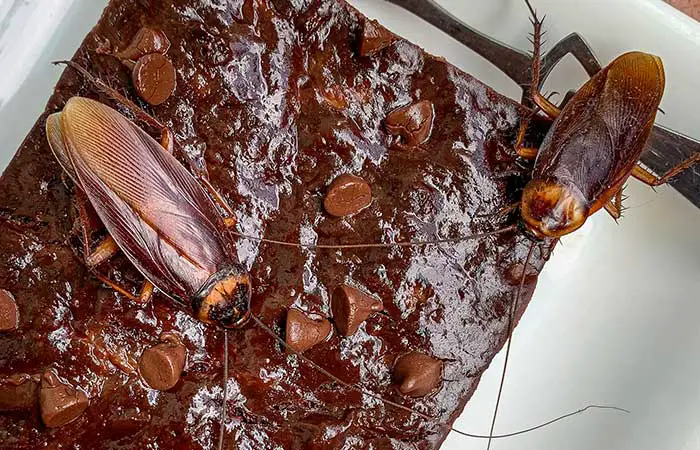
The beans are dried in the sun and roasted, removing most of the roaches and insects that survived during this time. Every component of chocolate is cleaned and classified throughout the process.
However, even with these preventative measures, it is likely that small insect and cockroach particles will make it into the transportation process. Therefore, roaches and other insects being present in food are considered an unavoidable defect.
There are no whole cockroaches in your chocolate, but there may be tiny shards of body parts that have been crushed and ground into tiny pieces. You won’t be able to detect them. Bugs are all around us, and it’s impossible to keep them out of our food.
Does The FDA Allow Cockroaches In Chocolate?
Almost everything we eat includes some insect parts, and they are generally safe to consume. As a result, the FDA classifies tiny insect consumption as an inherent element of the food business. The
FDA says that 60 or more insect fragments are allowed per 100 grams of chocolate.
The FDA also states that cocoa beans are grown in countries where cockroach infestation is inevitable. Despite the cockroach fragments, chocolate remains a safe food item.
You may think it is gross for cockroaches to be present in chocolate, but cockroach parts are everywhere in our world. They are even present in the air we breathe at least once a day. So although it is not ideal to eat cockroaches, you will probably never be able to avoid them completely.
Can Cockroach Traces in Chocolate Trigger An Allergy?
It’s easy to understand why cocoa would be implicated if you have a chocolate allergy. It’s possible that it isn’t the chocolate at all, but rather the cockroach particles within it.
Cockroaches can trigger an allergy in some people. It is a rare condition, but it is possible for cockroach fragments to cause an allergic reaction.
This usually happens when tiny roach fragments are breathed in from the air for lengthy periods of time (e.g., in a highly infested home).
There has been little research into the effects of actually consuming cockroaches. So is it feasible that someone could have a reaction just from eating chocolate? It’s unlikely – even if they are present. The different components in chocolate can individually trigger allergic reactions, so it’s best to avoid them altogether. However, if you experience an adverse reaction when eating chocolate, it’s most likely because one of the other compounds is responsible rather than cockroach fragments.
Are Cockroaches Good for You to Eat?
Research by The US National Library of Medicine shows that Cockroaches and other insects are a significant source of protein and healthy fats. They’re very nutritious, and cockroach farming is on the rise as we search for sustainable food sources.
Cockroaches are eaten in Eastern countries, such as China, Vietnam, and Thailand, deep-fried on a stick. While this might not catch on everywhere, it’s good to know that roaches are edible by humans.
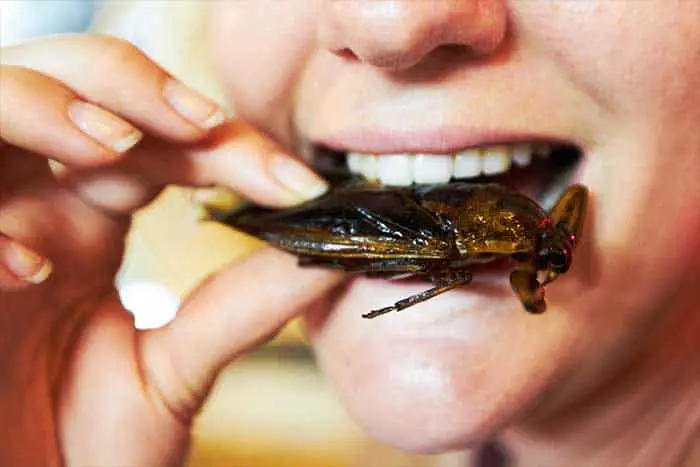
Which Chocolate Contains Cockroaches?
There is no way to tell if a bar of chocolate contains cockroach particles. As they aren’t a component of the recipe, cockroaches won’t be listed as an ingredient on the label.
Cockroaches are more likely to be found in milk and dark chocolate, but white chocolate is less likely to include any cocoa solids, making it safer to consume if you really are worried about the contamination possibilities.
The fatty component of cocoa beans is extracted, leaving the dark-colored solids. It’s not put back into white chocolate in contrast to milk or dark chocolate. As a result, white chocolate has just one ingredient: cocoa butter.
It’s not that white chocolate won’t have roach traces, but they’re more likely to appear at a lesser concentration than other chocolate bars.
Conclusion
No matter how conscientious a respectable food manufacturing firm is about keeping its facility free of insects, no one can promise that the odd cockroach won’t get in. The same may be said of almost all foods and even unprocessed foods, such as spinach and cabbages, which may conceivably include a bug among the leaves.

